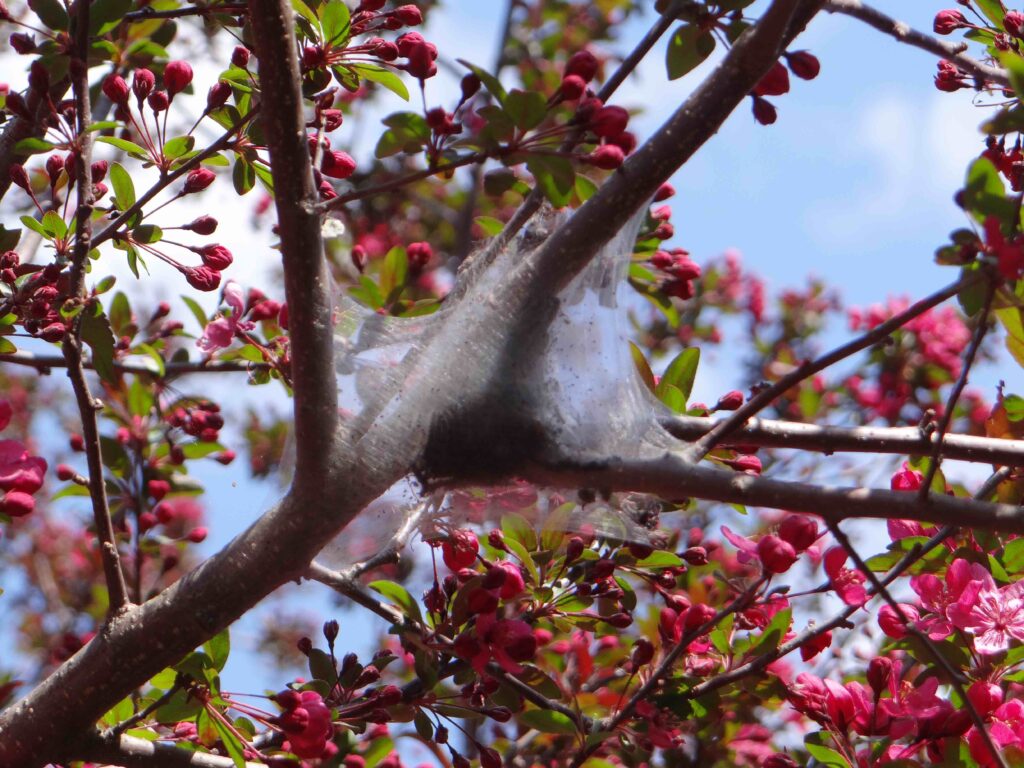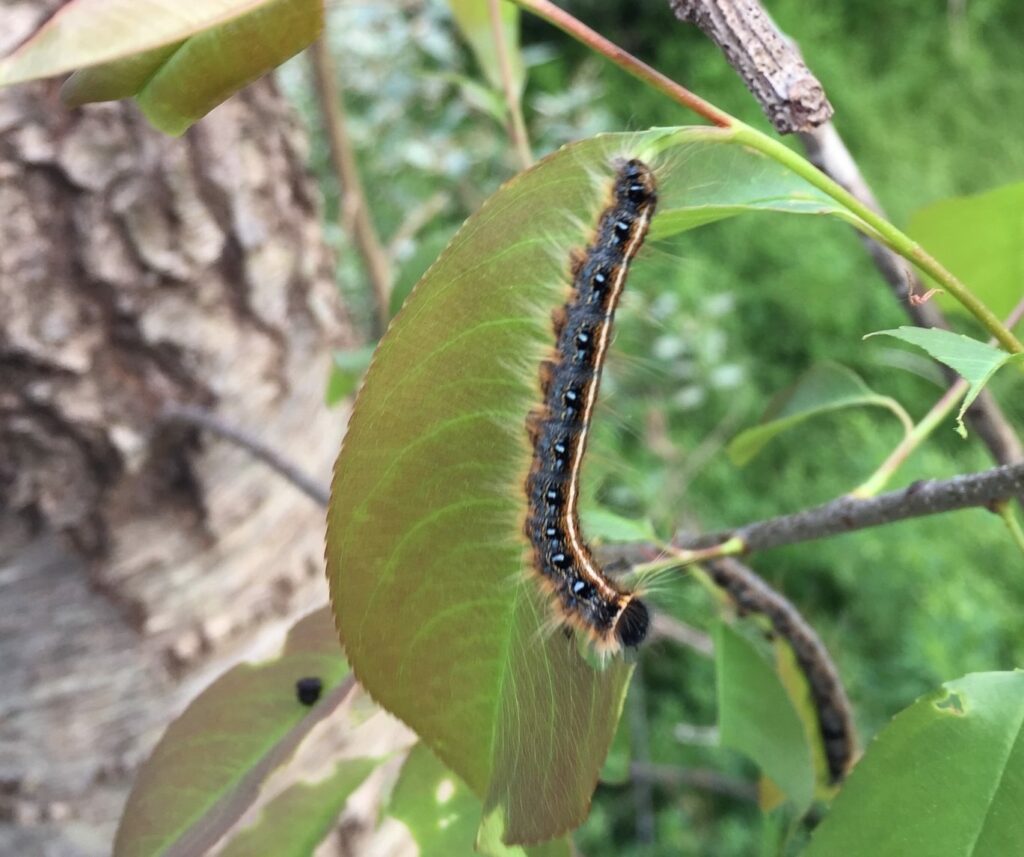Eastern Tent Caterpillars
go.ncsu.edu/readext?861077
en Español / em Português
El inglés es el idioma de control de esta página. En la medida en que haya algún conflicto entre la traducción al inglés y la traducción, el inglés prevalece.
Al hacer clic en el enlace de traducción se activa un servicio de traducción gratuito para convertir la página al español. Al igual que con cualquier traducción por Internet, la conversión no es sensible al contexto y puede que no traduzca el texto en su significado original. NC State Extension no garantiza la exactitud del texto traducido. Por favor, tenga en cuenta que algunas aplicaciones y/o servicios pueden no funcionar como se espera cuando se traducen.
Português
Inglês é o idioma de controle desta página. Na medida que haja algum conflito entre o texto original em Inglês e a tradução, o Inglês prevalece.
Ao clicar no link de tradução, um serviço gratuito de tradução será ativado para converter a página para o Português. Como em qualquer tradução pela internet, a conversão não é sensivel ao contexto e pode não ocorrer a tradução para o significado orginal. O serviço de Extensão da Carolina do Norte (NC State Extension) não garante a exatidão do texto traduzido. Por favor, observe que algumas funções ou serviços podem não funcionar como esperado após a tradução.
English
English is the controlling language of this page. To the extent there is any conflict between the English text and the translation, English controls.
Clicking on the translation link activates a free translation service to convert the page to Spanish. As with any Internet translation, the conversion is not context-sensitive and may not translate the text to its original meaning. NC State Extension does not guarantee the accuracy of the translated text. Please note that some applications and/or services may not function as expected when translated.
Collapse ▲Spring is early this year. We know it, the plants know it and guess what? The Eastern Tent Caterpillar knows it too. Eastern tent caterpillars are somewhat hairy and black with gold, white and blue markings. There is a white stripe down the back. The caterpillars grow up to almost 2 inches long and they’re out of their 1” long white/yellow silk cocoons looking for tasty new leaves to eat.
Found throughout eastern North America, you’ll see eastern tent caterpillars on mainly cherry, apple, and crabapple trees, hawthorn and maple, as well as some others. The caterpillars emerge from eggs laid the previous year, and spin a silk webbing in the crotches of tree branches (where the branch meets the trunk, or a small branch meets a larger one). As the caterpillars grow, they will continue to spin the silk webbing around their tent-like nest, adding several layers to expand its size. The caterpillars will leave the nest several times a day to look for food on days when the weather is nice, but will return to the nest at night. They feed in groups and may completely strip the new leaves from trees. Trees defoliated for several years by eastern tent caterpillars may weaken as the leaves aren’t there to function as the “food conversion factory” for the plant.
No food to supply fuel……well, there you go. Literally.
After about six weeks, the caterpillars leave the web nest and will spin individual cocoons on nearby trees, fence posts, or buildings. Once inside the cocoon, the caterpillar develops into the pupal stage. In early summer, adult moths molt from the pupal stage, emerge and fly away from the cocoons to mate and lay eggs. Caterpillars will emerge from these eggs the following spring in time with the new leaf food sources, and begin the life cycle all over again.
So what about your trees? For the most part, if your trees are mature, the webbed tents are ugly but feeding on the leaves will generally not damage the overall health of the tree unless there are a large number of tents on a single tree, or if the tree is infested repeatedly year after year. Keeping that in mind, how you control the problem depends on how many caterpillar tents are present and the amount of damage you are willing to put up with.
If there are just a couple, the tents can be pulled down with a stick and the caterpillars crushed or otherwise destroyed. Natural enemies play an important role in reducing eastern tent caterpillar numbers in most years. Caterpillars are frequently parasitized by various tiny braconid, ichneumonid, and chalcid wasps. Several predators and a few diseases also help to regulate their populations. This, in part, accounts for the fluctuating population levels from year to year.
Never use fire to destroy eastern tent caterpillars as fire is extremely dangerous. Fire may damage the tree and endangers the operator and nearby property. I know of people who’ve done this to their regret and shame. Do not do this. It did not turn out well for them and it doesn’t even make for a good story.
If the problem is more severe, or if the tents are too high to reach with a stick, you can treat with insecticides such as acephate (Orthene), (Orthene TTO), or carbaryl (Sevin), B.t. (Dipel), or bifenthrin (Talstar). Treat foliage nearest the web. It may be difficult to spray branches higher up in the tree, so use caution when spraying. Protect yourself and of course, ALWAYS READ AND FOLLOW LABEL DIRECTIONS FOR SAFE USE OF ANY PESTICIDE!






